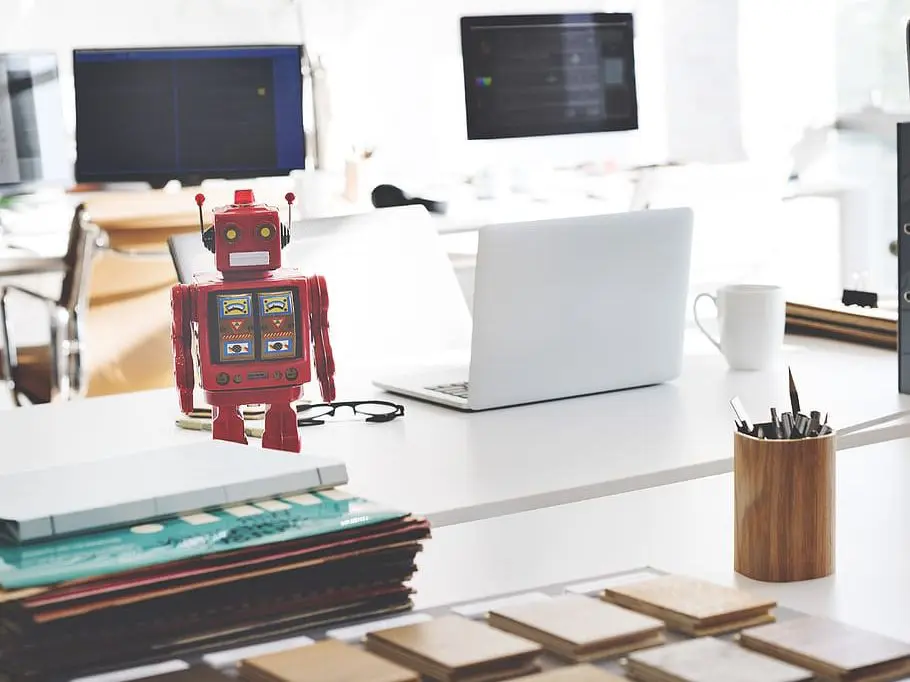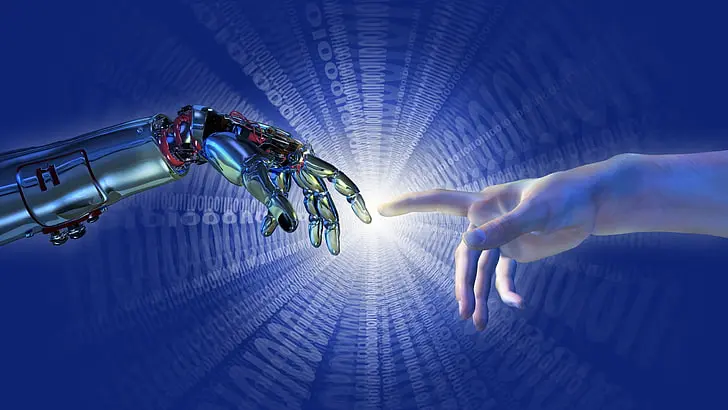
Embark on an exciting journey with us as we unravel the mysteries of artificial intelligence for beginners. Discover AI’s potential, basics, and how it shapes our world!
Welcome aboard! If you’ve ever been intrigued by the term artificial intelligence and wondered what it’s all about, you’re in the right place.
Our guide, ‘Artificial Intelligence for Beginners’, is designed to gently introduce you to this fascinating world.
We’ll explore its history, its impact on our lives, and how it’s shaping our future. So, sit back, relax, and let’s embark on this exciting journey together!
Artificial Intelligence for Beginners
Welcome to the exciting world of artificial intelligence! If you’re a beginner looking to understand what AI is all about, you’ve landed at the right spot.
In this comprehensive guide, we’ll walk you through the basics of AI, delve into its different types, and explore how it works.
We’ll also look at real-world applications of AI and provide you with resources to kickstart your learning journey.
Plus, we’ve got a handy FAQ section to answer some of the burning questions you might have.
So, let’s dive in and start our exploration of artificial intelligence for beginners!
Definition of Artificial Intelligence
Let’s start with the basics. Artificial Intelligence, often referred to as AI, is a branch of computer science.
Its aim is to imbue software with the ability to analyze its environment using either predetermined rules and strategies or patterns derived from learning algorithms, and then make decisions based on those analyses.
In simpler terms, AI is all about creating machines that can think and learn like humans.
But don’t worry, we’re not quite in the realm of sci-fi movies where robots take over the world!
Brief History and Evolution of AI
Now, let’s take a quick trip down memory lane. The concept of AI isn’t new.
In fact, it dates back to ancient times with myths, stories, and rumors of artificial beings endowed with intelligence or consciousness by master craftsmen.
Fast forward to the 20th century, the term Artificial Intelligence was coined in 1956 by John McCarthy at the Dartmouth Conference.
This marked the birth of AI as a field of study. Since then, AI has evolved from simple rule-based systems to complex machine learning and deep learning models, revolutionizing the way we live and work.
Importance of AI in Today’s World
So, why should we care about AI? Well, AI has the potential to greatly improve many aspects of our lives.
From personalized online shopping experiences and voice-activated virtual assistants like Siri and Alexa to more critical applications such as predicting natural disasters, diagnosing diseases, and even driving autonomous vehicles.
AI is becoming increasingly prevalent in our everyday lives, making tasks easier, operations more efficient, and even helping solve complex problems.
The importance of understanding AI and its implications cannot be overstated.
So, let’s continue our journey and delve deeper into this fascinating world of AI!
Understanding the Basics of AI
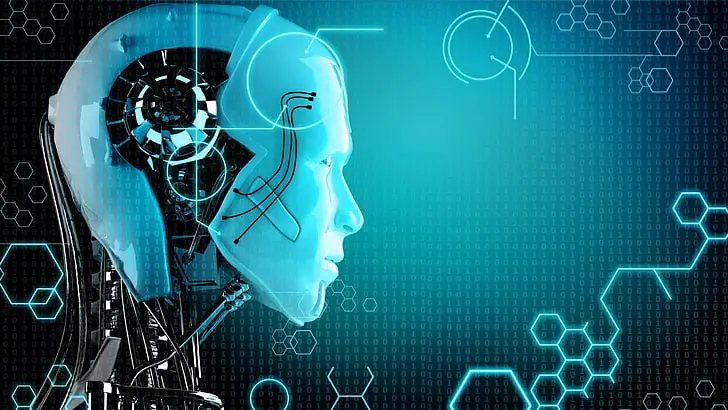
Ready to dive a bit deeper? In this section, we’re going to demystify some of the fundamental concepts of AI.
We’ll explore the different types of AI that exist, from the AI that powers your favorite virtual assistant to the AI that’s still largely in the realm of research.
We’ll also break down some of the jargon and talk about the basic workflow of an AI system.
By the end of this section, you’ll have a solid understanding of the basics of AI.
So, let’s get started on this exciting journey into the heart of artificial intelligence!
Different Types of AI: Narrow AI, General AI, and Superintelligent AI
Let’s kick things off by discussing the different types of AI.
First up, we have Narrow AI.
This is the type of AI that we interact with in our day-to-day lives. It’s designed to perform a narrow task, like recommending songs on Spotify or answering queries on Siri.
It operates under a limited set of constraints and is very good at the specific tasks it’s designed for.
Next, we have General AI.
This is the type of AI that has the potential to understand, learn, and apply knowledge in a broad range of tasks, much like a human being.
It’s the kind of AI you see in movies, but in reality, we’re still a long way from achieving this level of artificial intelligence.
Lastly, we have Superintelligent AI.
This is an AI that surpasses human intelligence and capability. It’s a concept that’s more theoretical at this point and is the subject of much debate and speculation.
Basic Concepts of AI: Machine Learning, Deep Learning, Neural Networks
Now, let’s break down some of the basic concepts of AI.
Machine Learning is a subset of AI where machines are given access to data and they use this data to learn for themselves.
It’s like teaching a computer to play chess by letting it play games and learn from its mistakes.
Deep Learning, on the other hand, is a subset of Machine Learning inspired by the structure of a human brain.
It creates an artificial neural network that mimics the workings of the human brain to process data and create patterns for decision-making.
Neural Networks are a series of algorithms that are designed to recognize patterns.
They interpret sensory data through a kind of machine perception, labeling, or clustering of raw input.
AI Workflows: Data Collection, Data Processing, Model Building, Training, Testing, Deployment
Finally, let’s talk about how AI works. The AI workflow typically starts with data collection.
• This is where we gather the data that the AI will learn from.
• Next, we have data processing, where we clean and organize the data into a format that the AI can use.
• Then comes model building, where we choose the right model for our AI.
• After that, we train our AI using our processed data. Once the AI has been trained, we test it to see how well it has learned.
• Finally, if our AI passes the testing phase, we deploy it.
This means we start using our AI to do the task it was designed for. And that’s a basic overview of the AI workflow!
Where Does ChatGPT Fall In These Processes?

ChatGPT, the AI many are familiar with and using now, is a product of OpenAI and falls under the category of Narrow AI.
It’s designed to perform a specific task, which is to generate human-like text based on the input it receives.
In terms of the AI workflow, ChatGPT has gone through all the stages:
Data Collection: ChatGPT was trained on a diverse range of internet text. However, it doesn’t know specifics about which documents were part of its training set or have access to any personal data unless explicitly provided during our conversation.
Data Processing: The collected data was processed and transformed into a format suitable for training the model.
Model Building: The model used for ChatGPT is a variant of the Transformer model, specifically a GPT (Generative Pretrained Transformer) model.
Training: The model was trained using a machine-learning technique called unsupervised learning. It learned to predict the next word in a sentence and through this process, it learned grammar, facts about the world, and some level of reasoning.
Testing: After training, the model was tested and fine-tuned to ensure it generates appropriate and coherent responses.
Deployment: ChatGPT has been deployed and is now interacting with users, generating text based on the prompts it receives.
It’s important to note that while ChatGPT can generate impressive and human-like text, it doesn’t understand the text in the way humans do.
It doesn’t have beliefs, opinions, or consciousness. It generates responses based on patterns it learned during training.
You can read more about how CHATGPT is changing the world in this article.
Applications of AI

Alright, now that we’ve got a handle on the basics, let’s explore how all this theory translates into real-world applications.
You might be surprised to learn that AI is already all around us, making our lives easier and more efficient.
From the virtual assistants that help us manage our schedules to the recommendation systems that suggest our next favorite movie, AI is transforming various aspects of our everyday lives.
In this section, we’ll delve into some of these applications, and also look at how AI is revolutionizing various industries.
So, let’s dive in and discover the incredible ways AI is being applied in the world around us!
AI in Everyday Life: Virtual Assistants, Recommendation Systems, etc.
Let’s start with how AI is making our everyday lives easier. Have you ever asked Siri to set a reminder or used Google Assistant to check the weather?
These are examples of virtual assistants, which use AI to understand and respond to our commands.
And how about when Netflix suggests a show you might like? That’s a recommendation system at work, using AI to analyze your viewing habits and preferences to suggest content you’re likely to enjoy.
From email spam filters to smart home devices, AI is becoming an integral part of our daily lives, often working behind the scenes to make things more convenient and personalized for us.
AI in Various Industries: Healthcare, Finance, Transportation, etc.
AI’s impact isn’t limited to our personal lives. It’s also transforming various industries.
In healthcare, AI is being used to predict diseases, assist in surgeries, and personalize patient care.
In finance, AI algorithms are used for trading, detecting fraud, and providing customer service.
In the transportation industry, AI is at the heart of self-driving cars. It’s also used to optimize logistics, like route planning for deliveries.
These are just a few examples. From agriculture to education to retail, AI is revolutionizing industries across the board.
Future Potential of AI
As for the future potential of AI, the possibilities are truly exciting.
We’re looking at a future where AI could potentially help us solve some of the world’s biggest challenges.
From tackling climate change by optimizing energy usage, to improving access to education through personalized learning, the potential applications of AI are vast and far-reaching.
However, it’s important to remember that with great potential comes great responsibility.
As we continue to develop and deploy AI, it’s crucial that we also consider the ethical implications and strive to use AI in a way that benefits all of humanity.
How AI Works

Are you ready to peek behind the curtain and see how the magic happens?
In this section, we’re going to explore how AI actually works. We’ll delve into the role of data in AI, discuss different learning methods, and even break down some common AI algorithms and models.
Don’t worry if some of these terms sound intimidating right now. We’ll walk through each concept step by step, making sure everything is easy to understand.
So, buckle up, and let’s dive into the fascinating mechanics of artificial intelligence!
Role of Data in AI
First things first, let’s talk about the role of data in AI.
You can think of data as the fuel that powers AI. Without data, AI systems wouldn’t have anything to learn from.
The quality and quantity of data directly impact how well an AI system can perform.
Data is used in the training phase of AI, where the system learns to make predictions or decisions based on the input it receives.
For example, an AI system designed to recognize images of cats would be trained on a large dataset of cat images.
The more diverse and comprehensive the data, the better the AI system can perform its task.
Supervised, Unsupervised, and Reinforcement Learning
Next, let’s discuss the different types of learning methods in AI: Supervised, Unsupervised, and Reinforcement Learning.
Supervised Learning is like learning with a teacher. The AI is given a set of input-output pairs, and its task is to find a rule that maps the input to the output.
For example, in a spam detection system, the AI would be trained on a dataset of emails labeled as ‘spam’ or ‘not spam’.
Unsupervised Learning, on the other hand, is like learning without a teacher.
The AI is given a set of inputs without any corresponding output, and its task is to find patterns or structures in the data.
This is often used for clustering or grouping data.
Reinforcement Learning is a bit different. It’s like learning by trial and error.
The AI interacts with an environment and learns to make decisions by receiving rewards or penalties.
Explanation of Algorithms and Models
Finally, let’s talk about algorithms and models.
An algorithm in AI is a set of rules or instructions that the AI follows to solve a problem or make a decision.
For example, a pathfinding algorithm might be used by an AI to find the shortest route from point A to point B.
A model, on the other hand, is a specific representation of a system that an AI uses to make predictions or decisions.
For example, a neural network is a model that’s designed to mimic the human brain, with interconnected nodes or ‘neurons’ that process information.
Different algorithms and models are suited to different tasks, and part of building an AI system is choosing the right ones for the job.
Getting Started With AI
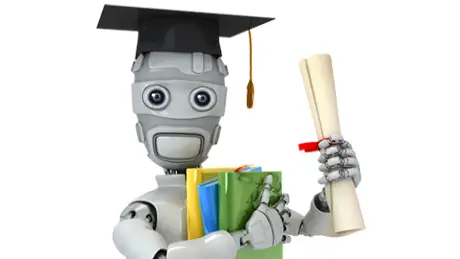
Feeling inspired to dive into the world of AI? That’s fantastic! In this section, we’re going to guide you on how to get started with AI.
We’ll talk about the prerequisites for learning AI, recommend some resources, and discuss the importance of practical projects and hands-on experience.
Remember, every expert was once a beginner, and the journey of a thousand miles begins with a single step.
So, let’s take that first step together and embark on your AI learning journey!
Prerequisites for Learning AI
Before you dive into learning AI, there are a few prerequisites that will help you on your journey.
First, having a basic understanding of mathematics, especially statistics, and algebra, is important as they form the backbone of many AI concepts.
Second, programming knowledge, particularly in languages like Python, is essential.
Many AI algorithms are implemented through code, and Python is a popular choice due to its simplicity and the availability of AI and machine learning libraries like TensorFlow and PyTorch.
Lastly, a curious and analytical mindset is key. AI is a rapidly evolving field, and being open to continuous learning and problem-solving is crucial.
Recommended Resources: Online Courses, Books, Tutorials
There are a plethora of resources available to help you learn AI. Online platforms like Coursera, edX, and Udacity offer comprehensive courses on AI and machine learning.
Books like: Artificial Intelligence: A Modern Approach by Stuart Russell and Peter Norvig, and
Hands-On Machine Learning with Scikit-Learn, Keras, and TensorFlow by Aurélien Géron are great for in-depth understanding.
For more hands-on learning, tutorials on websites like Kaggle and Medium can provide practical insights and allow you to work on real-world datasets.
Remember, the best way to learn is to do, so don’t be afraid to get your hands dirty with coding and implementing AI algorithms!
Importance of Practical Projects and Hands-On Experience
Speaking of getting your hands dirty, let’s talk about the importance of practical projects and hands-on experience.
While understanding the theory behind AI is important, applying that theory to practical projects is where real learning happens.
Working on projects allows you to understand how the concepts you’ve learned fit together, and gives you a chance to tackle the kind of problems you’ll face in the real world.
Plus, having a portfolio of projects to showcase can be a great advantage if you’re looking to start a career in AI.
So, start small, keep building, and most importantly, have fun learning!
Artificial Intelligence for Beginners FAQs
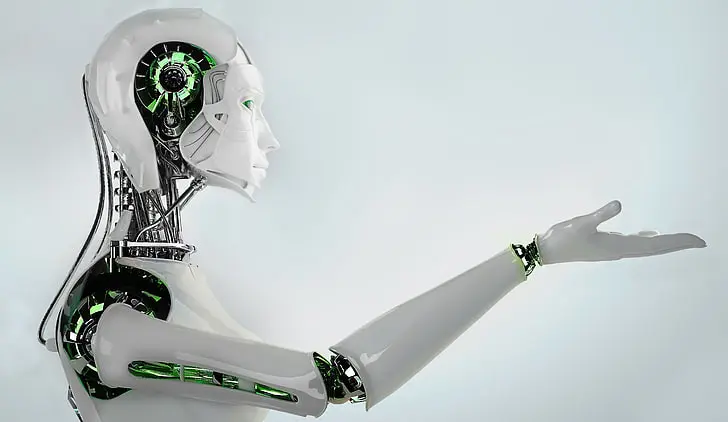
Got questions? We’ve got answers! In this section, we’re going to tackle some of the most frequently asked questions about AI.
From how a beginner can start learning AI, to what you should know before diving in, we’ve got you covered.
Remember, there’s no such thing as a silly question. Every question is a starting point for learning something new.
So, let’s dive into these FAQs and clear up some of your queries about artificial intelligence!
Q: Can a beginner learn artificial intelligence?
A: Absolutely! Anyone with a curiosity about AI and a willingness to learn can start their journey into artificial intelligence.
While having a background in mathematics and programming can be helpful, there are plenty of resources available that start with the basics and gradually build up to more complex concepts.
Remember, every expert was once a beginner. So, don’t be afraid to take that first step!
Q: What should I know before starting artificial intelligence?
A: Before you start learning AI, it’s good to have a basic understanding of mathematics, particularly algebra, and statistics, as they form the foundation of many AI concepts.
Familiarity with a programming language, especially Python, is also beneficial as most AI algorithms are implemented through code.
However, the most important thing is a willingness to learn and a curiosity about the subject.
AI is a rapidly evolving field, and being open to continuous learning is key.
Q: How do I start artificial intelligence for beginners?
A: Starting your AI journey can be as simple as picking up a beginner-friendly book on the subject or enrolling in an online course.
Platforms like Coursera, edX, and Udacity offer comprehensive courses on AI and machine learning.
For more hands-on learning, websites like Kaggle provide tutorials and competitions where you can apply what you’ve learned.
Remember, the best way to learn is by doing, so don’t be afraid to start a project and get your hands dirty with coding and implementing AI algorithms!
Artificial Intelligence for Beginners Conclusion
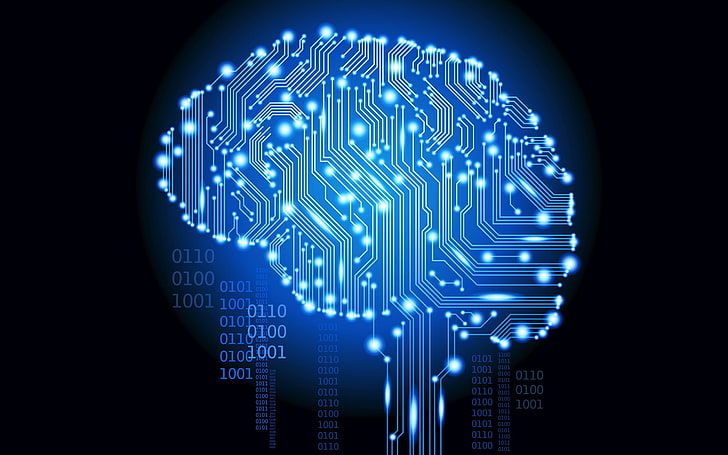
As we draw to the end of our journey into the world of AI, it’s time to take a moment to reflect on what we’ve learned.
From understanding the basics of AI to exploring its applications and even getting a glimpse into its future potential, we’ve covered a lot of ground.
In this final section, we’ll recap the key points and hopefully leave you feeling inspired and excited about the possibilities of AI.
So, let’s wrap things up and look forward to the exciting AI adventures that lie ahead!
Recap of the Importance and Potential of AI
As we’ve explored throughout this post, AI is not just a buzzword or a futuristic concept.
It’s a transformative technology that’s already making a significant impact on our everyday lives and various industries.
From simplifying tasks with virtual assistants to revolutionizing healthcare and transportation, AI’s potential is vast and far-reaching.
But perhaps the most exciting aspect of AI is its potential for the future.
As AI technology continues to evolve, we can look forward to even more innovative applications and solutions to complex problems.
Whether it’s tackling climate change, improving education, or advancing healthcare, the potential of AI is truly boundless.
Encouragement for Continued Learning and Exploration
As we wrap up, I want to encourage you to continue your learning journey in AI.
Remember, learning is a lifelong process, and there’s always more to discover.
Don’t be afraid to dive deeper into the topics that interest you, take on new projects, or explore different areas of AI.
Here is a good article about the curriculum for learning AI: Artificial Intelligence for Beginners – A Curriculum
Whether you’re looking to start a career in AI, use it in your current profession, or simply satisfy your curiosity, keep that spark of learning alive.
The world of AI is vast and exciting, and your exploration is just beginning.
So, keep learning, keep exploring, and most importantly, have fun on your AI journey!







